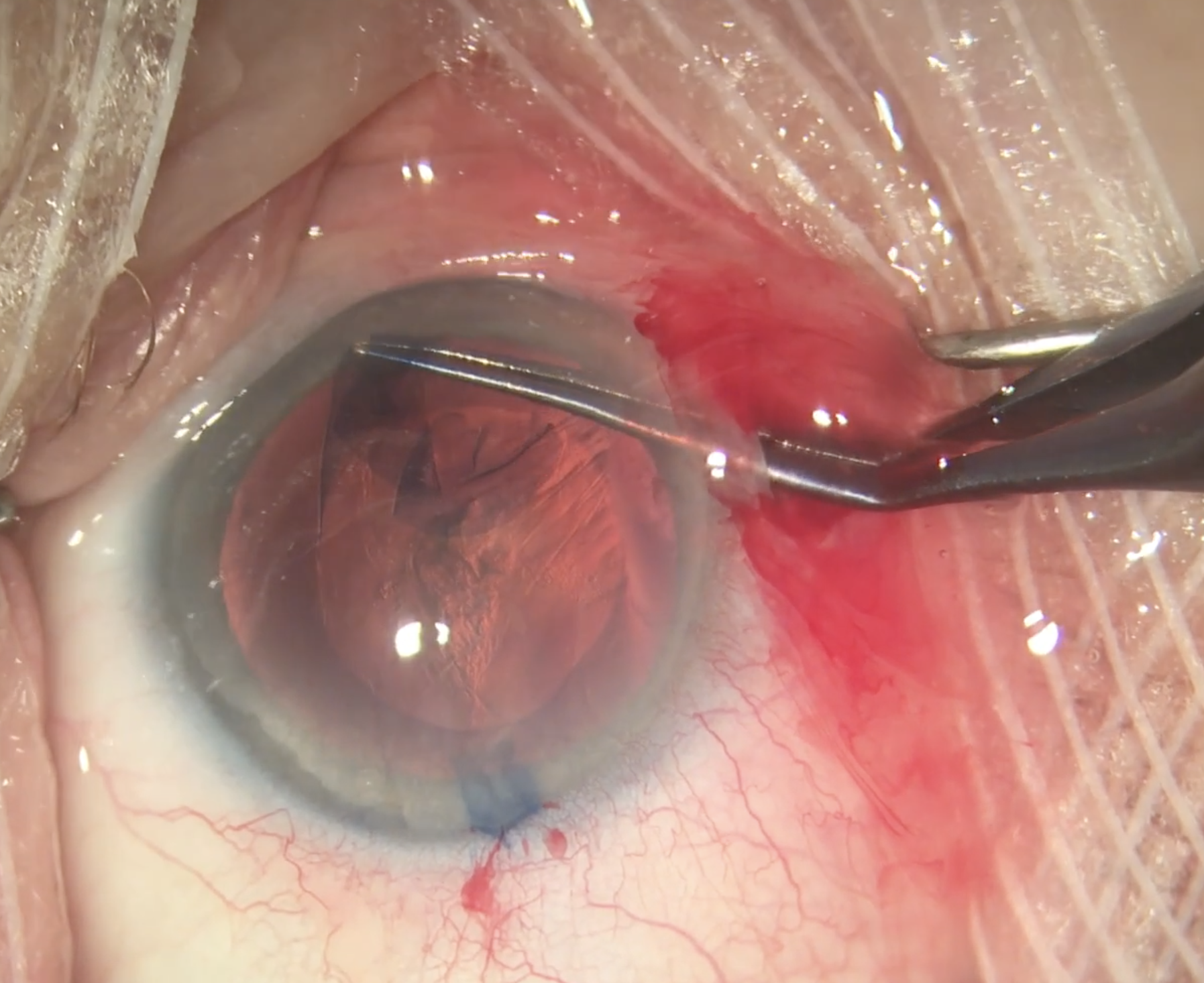 |
| Glaucomatous eyes demonstrated different risk profiles of increased IOP spike dependent on subtype of glaucoma. Photo: Christina Tran, BS, and Leonid Skorin, Jr., DO, OD. Click image to enlarge. |
An improved understanding of patient characteristics associated with IOP spike may help guide surgical decision making and allow surgeons to stratify and reduce the risk of elevated IOP after stand-alone cataract surgery. Researchers at the Bascom Palmer Eye Institute in Miami aimed to determine if specific demographic and/or clinical factors were associated with an increased risk of IOP spike in the early postoperative period following stand-alone phacoemulsification. They believed that the breadth and precision of the IRIS Registry provide a unique opportunity to better characterize IOP spikes. Their study, which was published in Ophthalmology, confirmed several demographic and ocular risk factors previously suggested to contribute to postoperative IOP spike, including a glaucoma diagnosis and pseudoexfoliation syndrome.
The team analyzed data from 1,191,034 eyes IRIS Registry data who underwent stand-alone phacoemulsification over about a seven-year period (mean age 71.3 years, 61.2% female sex and 24.8% with glaucoma).
An IOP spike occurred in 3.7% of all eyes, 5.2% of eyes with glaucoma and 3.2% of eyes without glaucoma. Multivariable analyses of all eyes indicated a greater risk of IOP spike with higher baseline IOP (odds ratio; OR: 1.57 per 3mm Hg), male sex (OR: 1.79), glaucoma (OR: 1.19), Black race (OR: 1.39 compared with Asian and OR: 1.21 compared with Hispanic), older age (OR: 1.07 per 10 years) and complex surgery coding (OR: 1.22).
| For more on the OD’s responsibilities in post-op cataract care, see this feature. |
The team noted that diabetes (OR: 0.90) and aphakia after surgery (OR: 0.60) appeared to be protective against IOP spike. Compared with glaucoma suspects, there was a greater risk of IOP spike with ocular hypertension (OR: 1.55), pigmentary glaucoma (OR: 1.56) and pseudoexfoliative glaucoma (OR: 1.52). There was a lesser risk for patients with normal tension glaucoma (OR: 0.55), as well those who were primary angle closure suspect (OR: 0.67) or had primary angle closure glaucoma (OR: 0.81). Having more baseline glaucoma medications was associated with IOP spike (OR: 1.18 per medication) while topical beta-blocker use (OR: 0.68) was protective.
“Given our results, one could consider administering topical beta blocker for patients at highest risk of IOP spike,” the authors wrote in their paper. “Although IOP-lowering agents may not completely prevent IOP spikes, some recommend aqueous suppressants in high-risk patients with existing preoperative optic nerve damage.”
“This study can help inform preoperative planning, discussions with patients prior to cataract surgery, and surgical decision-making, particularly when caring for patients who may be the most vulnerable to the harmful effects of an IOP spike and/or those at highest risk,” the authors concluded. “Cataract surgeons may be able to reduce the risk of IOP spike in certain populations, for example, elderly male patients of certain races with a complex cataract or glaucoma (particularly those with pigmentary or pseudoexfoliative glaucoma) using a high number of baseline IOP-lowering medications and with an elevated baseline IOP.”
Lidder AK, Vanner EA, Chang TC, et al. Intraocular pressure spike following stand-alone phacoemulsification in the Intelligent Research in Sight (IRIS) Registry. Ophthalmology. January 19, 2024. [Epub ahead of print]. |

